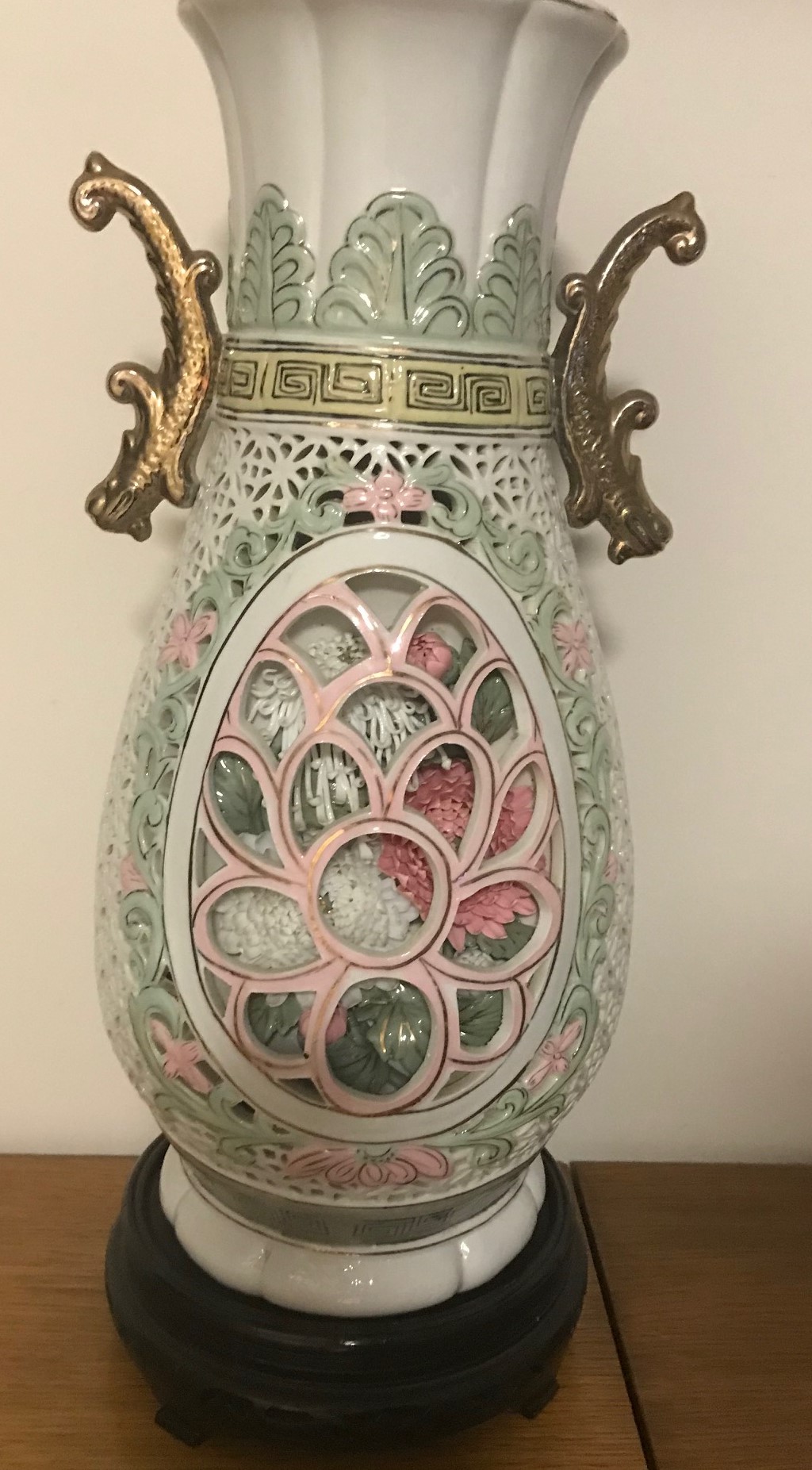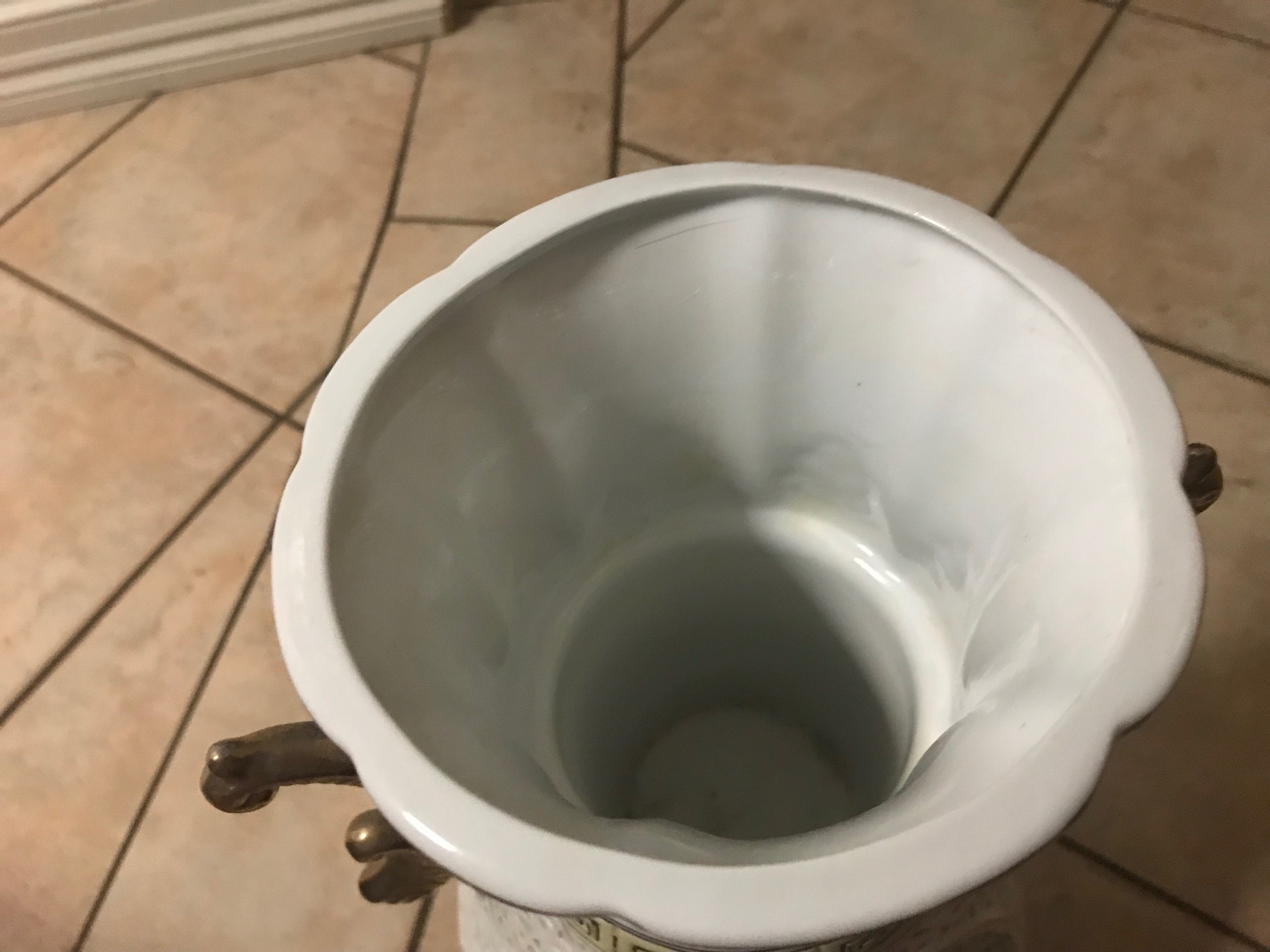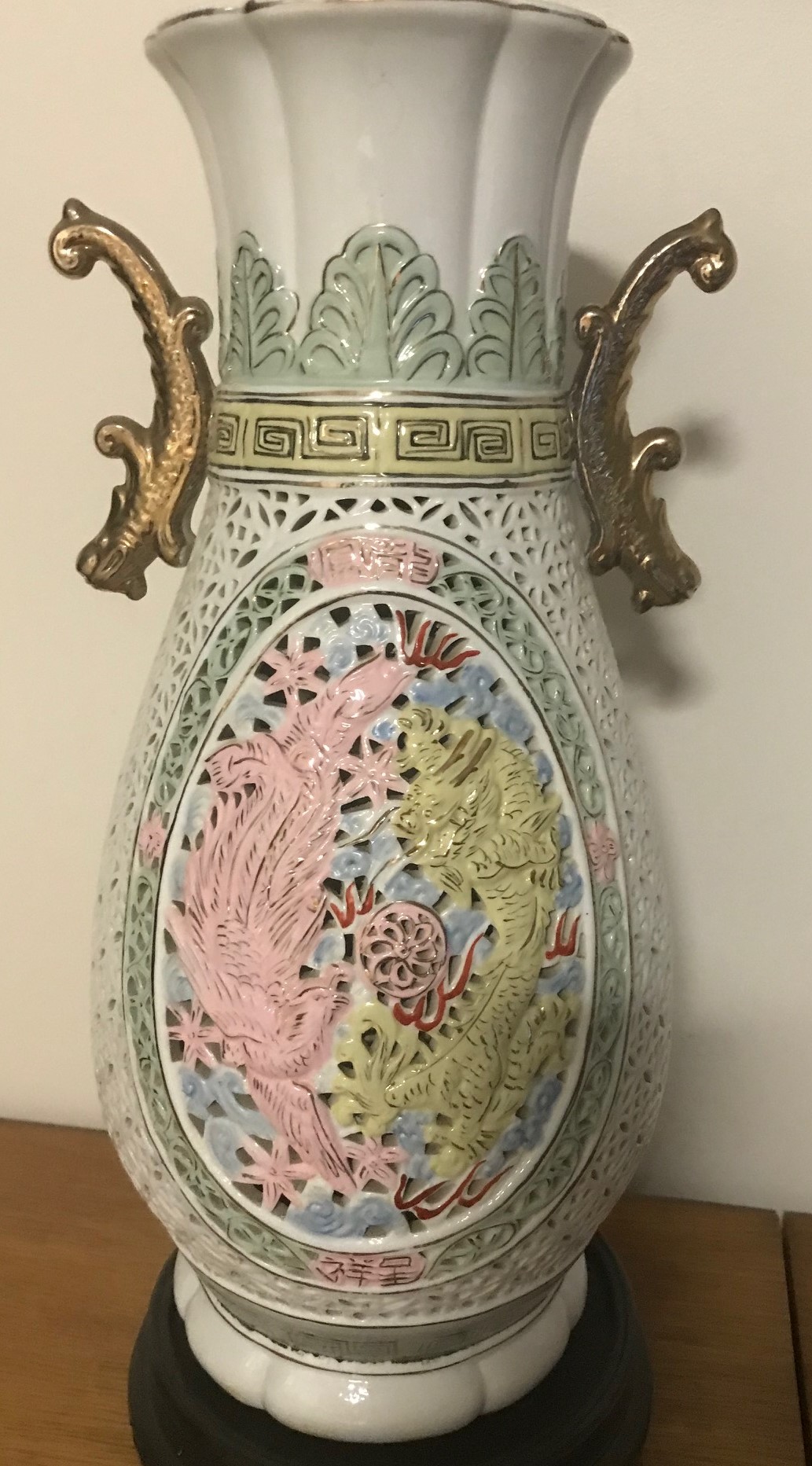
|
Subject:Re: What era? what is it used for? Translate
Posted By: Bill H Sun, Dec 05, 2021
I believe this flower vase may have been produced shortly before the Cultural Revolution (1966–1976), although it is certainly politically sterile enough to have come along on the cusp of that movement. I think the three characters inscribed in the lower part of the decorative field are "呈羊示" (Cheng yang shi) and are read from right to left as "Manifestly like a ram" (an auspicious animal associated with Canton or Guangzhou, a.k.a. the "City of Five Rams"). Further, when read from left to right, they might also be considered as homonymic for "Manifestly Canton". This seems to suggest that the vase might have been made at one of the Guangzhou kilns at Foshan. P.S., I'm open to further comment on other possible translations in this instance.
Best regards,
Bill H.
|
 What era? what is it used for? Translate ( China & Japan ) - Donna Braybrook - Nov 27, 2021 (07:55 PM)
What era? what is it used for? Translate ( China & Japan ) - Donna Braybrook - Nov 27, 2021 (07:55 PM)  Re: What era? what is it used for? Translate
Re: What era? what is it used for? Translate  - Donna Braybrook - Nov 28, 2021 (03:30 AM)
- Donna Braybrook - Nov 28, 2021 (03:30 AM)  Re: What era? what is it used for? Translate
Re: What era? what is it used for? Translate  - Donna Braybrook - Nov 28, 2021 (03:31 AM)
- Donna Braybrook - Nov 28, 2021 (03:31 AM)  Re: What era? what is it used for? Translate - Stan - Dec 05, 2021 (10:31 AM)
Re: What era? what is it used for? Translate - Stan - Dec 05, 2021 (10:31 AM)  Re: What era? what is it used for? Translate - Bill H - Dec 05, 2021 (02:06 AM)
Re: What era? what is it used for? Translate - Bill H - Dec 05, 2021 (02:06 AM)  Re: What era? what is it used for? Translate - Bill H - Dec 05, 2021 (01:30 PM)
Re: What era? what is it used for? Translate - Bill H - Dec 05, 2021 (01:30 PM) 


.jpg)